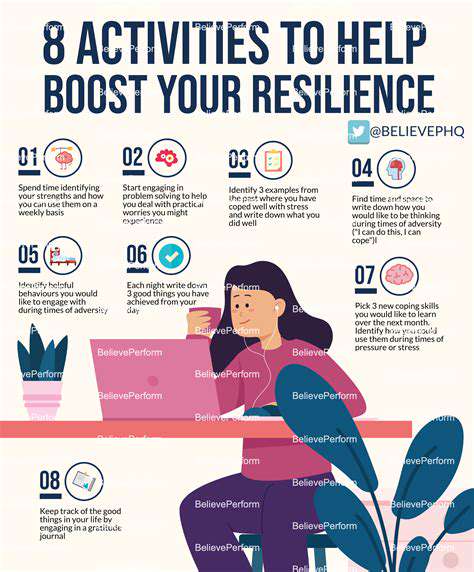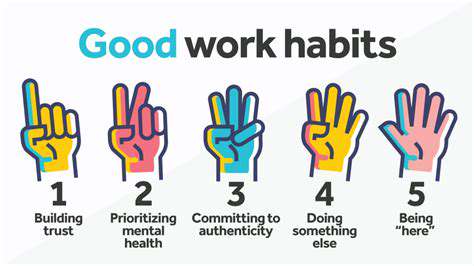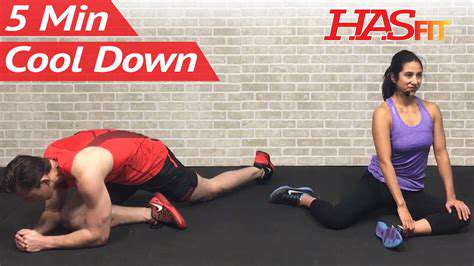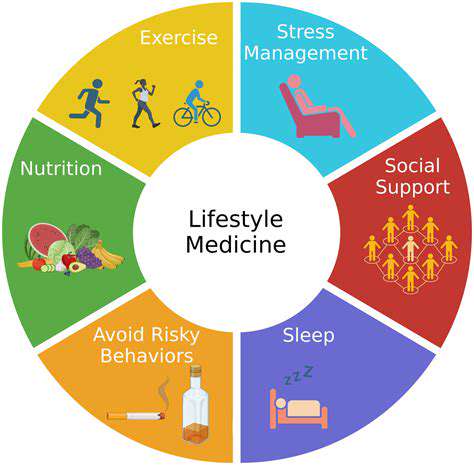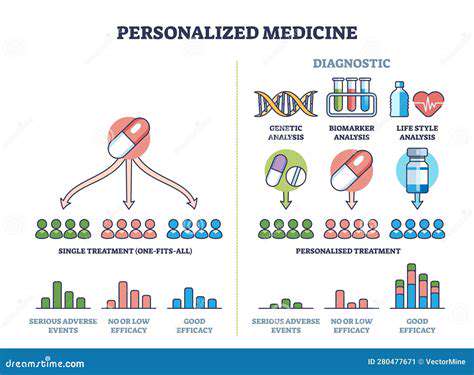Routines to Reduce Wrist Joint Stiffness
Therapeutic Exercises for Wrist Strength and Stability
Strengthening Exercises for Wrist Extensors
Wrist extension exercises are crucial for improving the strength and stability of your wrist. These movements target the muscles on the back of your forearm, responsible for extending your wrist. A common exercise is the wrist extension, where you hold a light weight or resistance band and slowly extend your wrist, keeping your forearm stable. Performing these exercises consistently, with proper form, will gradually increase the strength and endurance of the wrist extensor muscles, leading to improved functionality and reduced risk of injuries.
Another effective wrist extension exercise involves using resistance bands. Loop a resistance band around your hand and anchor the other end to a stable object. Slowly extend your wrist against the resistance of the band, ensuring a controlled movement. Gradually increase the resistance of the band as you gain strength, carefully monitoring your form to prevent strain or injury. Regular practice of these exercises will contribute to improved wrist stability and overall hand function.
Strengthening Exercises for Wrist Flexors
Wrist flexion exercises focus on the muscles on the front of your forearm, which are vital for bending your wrist. A simple exercise is to hold a light weight or resistance band and slowly flex your wrist, keeping your forearm stable. This exercise effectively strengthens the wrist flexor muscles, improving their endurance and overall strength. Consistent practice of these movements is key to achieving optimal wrist health and preventing future injuries.
Another effective exercise is to use a hand-held weight and gradually flex your wrist against the resistance. Focus on maintaining a controlled and slow movement throughout the exercise. By performing this exercise regularly, you can progressively build the strength of your wrist flexors, enhancing their capacity to bear weight and perform daily tasks with ease.
Wrist Stabilization Exercises with Light Weights
Incorporating light weights into your wrist stabilization routine is a beneficial approach for strengthening and improving the stability of your wrists. Using light dumbbells or hand weights, perform wrist rotations and pronations. These exercises engage the smaller stabilizing muscles around your wrist joint, contributing to better wrist control and coordination. The key is to maintain a slow and controlled tempo throughout the exercise, focusing on maintaining a neutral wrist position.
Wrist Stabilization Exercises with Resistance Bands
Resistance bands offer a versatile tool for wrist stabilization exercises. By using resistance bands, you can perform various exercises that target wrist stability, such as wrist circles and wrist extensions against resistance. These exercises enhance the strength and endurance of the supporting muscles around the wrist joint, effectively improving stability. Consistent use of resistance bands can lead to better control and coordination of your wrist movements, reducing the risk of injury.
Functional Exercises and Activities
Beyond isolated exercises, incorporating functional movements into your routine is essential for improving wrist strength and stability in daily activities. Activities such as lifting light objects, carrying groceries, or using a computer mouse can help to strengthen the wrist muscles and improve coordination. Gradually increasing the weight or difficulty of these activities can help you build functional strength and improve wrist performance. A key aspect is to prioritize proper form and avoid movements that put undue stress on your wrist.
Wrist Stretches for Flexibility and Pain Relief
Stretching exercises are equally important for maintaining wrist flexibility and alleviating pain. Gentle wrist stretches, such as wrist extensions and flexions, can help to improve range of motion and reduce stiffness. Hold each stretch for 15-30 seconds, focusing on a comfortable stretch without pain. Regular stretching can help improve blood flow to the wrist, reducing inflammation and discomfort. Incorporating wrist stretches into your daily routine can promote better flexibility and alleviate wrist pain, improving overall comfort and function.
Ergonomic Adjustments to Prevent Wrist Stiffness

Ergonomic Adjustments for the Workstation
Proper ergonomic adjustments at your workstation are crucial for preventing various health issues, particularly musculoskeletal disorders (MSDs). These adjustments, encompassing everything from chair height to monitor placement, significantly impact the body's posture and strain on different muscle groups. A well-designed workspace minimizes the risk of repetitive stress injuries and chronic pain, allowing for sustained productivity and comfort throughout the workday.
Consider factors such as desk height, chair support, and the position of your keyboard and mouse. These seemingly small adjustments can have a substantial impact on your overall well-being and comfort. By understanding and implementing these ergonomic principles, you can create a workspace that promotes good posture and reduces the likelihood of developing painful conditions.
Monitor Placement and Viewing Angle
Maintaining the correct monitor placement is essential to prevent neck and eye strain. Positioning the screen at arm's length and ensuring it's at or slightly below eye level is vital. This prevents excessive neck flexion or extension, which can lead to discomfort and pain over time. Proper monitor placement is critical for maintaining a neutral posture and reducing the risk of developing long-term musculoskeletal problems.
Adjusting the monitor's tilt and height can further optimize viewing comfort. A slight downward tilt of the monitor can help reduce eye strain, and an appropriate height ensures that your line of sight is comfortable and aligned with the center of the screen. This reduces strain on your neck and shoulders. Ensuring this aspect is correct is a key component of reducing long-term visual fatigue.
Keyboard and Mouse Positioning
Proper keyboard and mouse positioning minimizes strain on your wrists, hands, and forearms. Keeping your wrists straight and aligned with your forearms is crucial. Avoid bending your wrists excessively, either upward or downward. Use a wrist rest if needed to support your wrists and maintain a neutral position. A properly positioned keyboard and mouse can help prevent carpal tunnel syndrome and other repetitive strain injuries.
Place the keyboard directly in front of you, ensuring that your elbows are bent at approximately a 90-degree angle. The mouse should be positioned close to the keyboard, allowing for easy and comfortable use. Maintaining a neutral posture when using these peripherals is key to reducing strain and preventing discomfort. Consistent use of proper techniques reduces the risk of long-term pain and discomfort.
Lifestyle Modifications for Overall Wrist Health

Dietary Changes
Adopting a balanced diet is crucial for overall well-being and can significantly impact various health conditions. Prioritizing whole, unprocessed foods like fruits, vegetables, lean proteins, and whole grains is essential for sustained energy and nutrient intake. This approach helps in managing weight, reducing the risk of chronic diseases, and improving digestion. A balanced diet, rich in fiber and antioxidants, can also contribute to a healthier gut microbiome, further promoting overall wellness.
Reducing processed foods, sugary drinks, and excessive saturated and unhealthy fats is equally important. These dietary choices often contribute to inflammation and can negatively impact various bodily functions. A gradual transition to healthier eating habits is often more sustainable and effective than drastic changes. Consulting a registered dietitian can provide personalized guidance and support tailored to individual needs and health goals.
Physical Activity
Regular physical activity plays a pivotal role in maintaining a healthy weight, improving cardiovascular health, and boosting mood. Incorporating various forms of exercise, such as cardio, strength training, and flexibility exercises, can contribute significantly to overall fitness. Finding activities you enjoy is key to maintaining consistency and long-term adherence to a healthy lifestyle.
Aiming for at least 150 minutes of moderate-intensity aerobic activity or 75 minutes of vigorous-intensity aerobic activity per week, along with muscle-strengthening activities on two or more days a week, is generally recommended for most adults. Consult with a healthcare professional before starting any new exercise program, especially if you have underlying health conditions.
Stress Management Techniques
Chronic stress can negatively impact physical and mental health. Developing effective stress management techniques is crucial for overall well-being and can significantly improve quality of life. Stress can manifest in various ways, from headaches and digestive issues to anxiety and depression. Addressing the root causes of stress and implementing coping mechanisms is paramount to effectively managing its impact.
Exploring techniques such as mindfulness, meditation, deep breathing exercises, and yoga can significantly reduce stress levels. These practices can help regulate the body's response to stress and promote relaxation. Prioritizing sufficient sleep, maintaining healthy relationships, and engaging in hobbies or activities that bring joy can also contribute to stress reduction.
Sleep Hygiene
Adequate sleep is essential for physical and mental restoration. Insufficient sleep can negatively impact various bodily functions, including hormone regulation, immune function, and cognitive performance. Creating a consistent sleep schedule and establishing a relaxing bedtime routine can significantly improve sleep quality. This routine could include taking a warm bath, reading a book, or listening to calming music.
Creating a sleep-conducive environment, such as a dark, quiet, and cool bedroom, is also crucial. Limiting exposure to screens before bed and avoiding large meals or caffeine close to bedtime can further optimize sleep hygiene. Prioritizing sleep is an essential component of overall well-being, impacting everything from mood to physical health.
